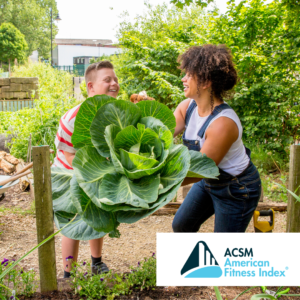
Gardening goes in and out of fashion over time, but the COVID-19 pandemic ushered in a new, younger wave of gardeners, many of whom grow in one of the more than 29,000 community garden plots located in city parks in the 100 largest U.S. cities. Community gardens have many benefits, including promoting healthy eating and physical activity, improving mental health and building social connections. With its many advantages, you could consider community gardening a “superfood” of activity.
One of the most obvious benefits of community gardens is that they increase access to healthy foods. In fact, adults who participate in community gardening eat more fruits and vegetables than those who don’t garden. By growing their own produce, gardeners can specifically plant foods that they like to eat as opposed to being restricted to what’s available in grocery stores. This is especially important in low-income neighborhoods where access to fresh fruits and vegetables may be limited. Food insecurity, or the limited access to nutritionally adequate food, affects an average of 11.5% of residents in the largest 100 US cities. Community gardens are an important tool to seasonally reduce food insecurity concerns up to 90% in impacted communities.
Community gardens also promote physical activity. Gardening is a whole-body activity that can burn the same number of calories as a traditional workout. Plus you get the added benefit of time spent in nature! Typical gardening tasks like digging, raking, lifting and squatting are excellent at burning calories, strengthening muscles and increasing physical fitness. Depending on the task, gardening can be a low- to moderate-intensity activity that helps meet the ACSM recommendation for 150 minutes of physical activity each week.
In addition to physical health benefits, community gardens help improve mental health and social connections. Studies have shown that gardening reduces stress and anxiety and promotes a sense of well-being. Community gardening, in particular, can decrease feelings of isolation and boost self-esteem. These gardens provide a space for people to connect with others and to work collaboratively. This is especially important for people who may be isolated or have limited social networks.
How can you get involved in a community garden?
The first step to getting involved is to find a garden in your area. Many cities have organized community garden programs that can help you find local garden plots, lend you tools or teach you how to garden. Local libraries, extension offices and community-based organizations are also great resources for finding community gardens and learning how to grow. (Pro tip: check with your local library to see if they have a seed bank that gives free seeds to library card holders.) Make sure to sign up early since some community gardens fill up quickly!
If you don’t have a community garden in your area, consider starting one. Talk to your neighbors, local organizations or city officials about the benefits of community gardens and how you can start one in your neighborhood. You may be surprised at how many people are interested in getting involved and how much support you can get from your local community.
Spring is the perfect season to get your hands dirty and start growing fresh fruits and vegetables. Whether you’re a seasoned gardener or a beginner, there’s a welcoming place for you in a community garden. So, what are you waiting for? Get out there and start gardening!
Author: Gretchen Patch, MPH, CPH (Avid gardener and big supporter of extension offices 😊)
Senior Director of Strategic Health Initiatives and Partnerships, ACSM



2 comments